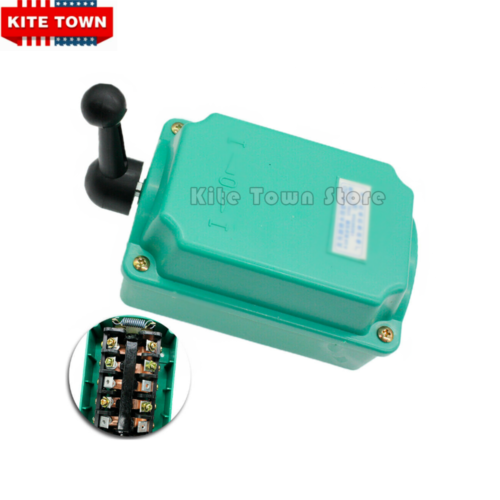After thinking about the subject for awhile, I had a thought about old motor switches. This from the days I was attached to an Ice Breaker (~1970) and the technology was old then. There was a reversing switch for DC motors, 4 wires, that had mechanical innards that delayed. Some sort of latching mechanism. I never had one apart, never needed to replace one. But remember using one a few times. Old days, older equipment, much older ship.(~1942) What gets my attention is the extremely long switch body pictured. Twice or more that of a generic toggle switch.
The switch in question has only two position, single pole, two wire, a simple ON/OFF switch. Maybe, since it dates from the same period as that ship, it contains a latching/delay mechanism like the ones I dealt with. I see no reason why it should be so, but for old machines that were adapted and sold for shipboard use, it is within the realm of possibility.
A couple of other points that will be closer to useful. First is
DO NOT use a generic light switch from the hardware store. They will not withstand the "flyback" of an inductive load. (motor load) One will fail eventually, often when switching off. The contacts will weld. . .
The other involves a "political" possibility, that of China. (current 2209) I had found on eBay a plastic drum switch for around $10. That was a couple-three years back, the price is probably much higher today. But if you can find one, the plastic is rigid, they are rated for 480 volts and several horsepower. I had bought several, several machines and spare parts.
Never be without spare parts, at least the simple stuff.
Find many great new & used options and get the best deals for Drum Switch Forward/Off/Reverse Motor Control Reversing 60A at the best online prices at eBay! Free shipping for many products!
www.ebay.com
Well, as of today, 220908(?) they aren't all that expensive,
yet. This is what I put on my machines. I am happy with the operation and haven't needed any spares,
yet. Let's just hope that if I do need spares, I can still find them.
While as a rule, you won't want to run a threaded (1-1/2x8) spindle in reverse, there are occasions where it can come in handy. I wind my own coils for small solenoids, reversing means I can feed the wire to the top where I can see what I'm doing. If/when you do need to do so, a reversing switch already mounted can be to your advantage. Just a matter of wiring. . .
.

